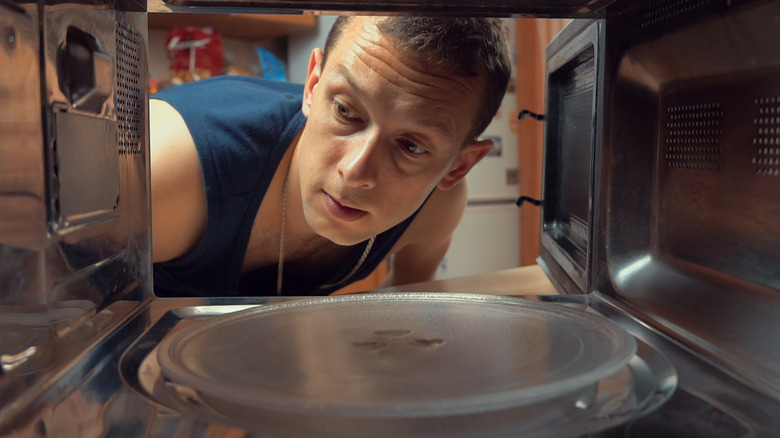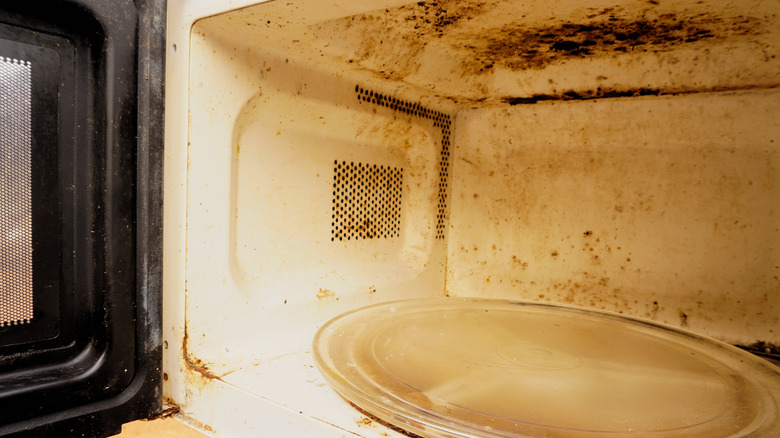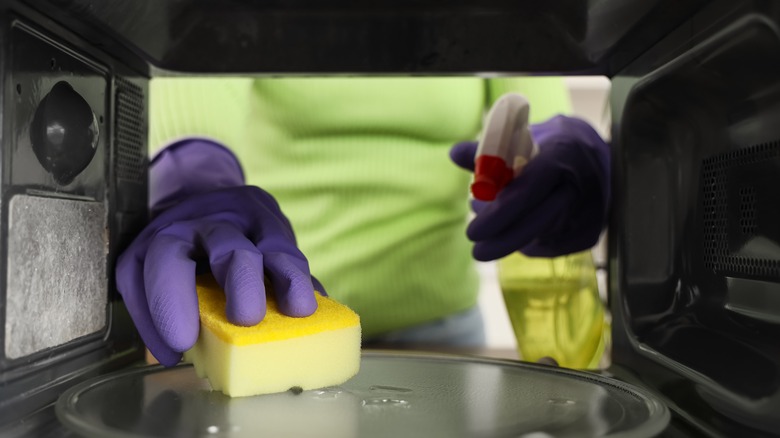Why Is There Rust In Your Microwave—And Is It Safe To Use?
You head to the kitchen to reheat last night's pizza. But as you open the microwave, you stop in disbelief; there's rust inside. You can't quite remember seeing it before. Was it there last week? Maybe. Or, maybe you just didn't look closely enough. Rust in a microwave isn't unusual. In fact, it's more common than you'd think. Over time, heat, moisture, and splattered food slowly wear away the glossy coating that protects the metal interior. Once that barrier breaks down, oxidation causes those familiar reddish-brown marks to appear.
But is it safe to keep using a rusty microwave? The answer is both yes and no. If the rust is only on the surface, it's generally safe to keep using the microwave for now. However, if it's flaking off or eating into the metal underneath, that's a red flag, and a potential safety and health hazard.
Age, cleaning habits, and clogged vents could be the cause
Your microwave's interior is coated with a protective, microwave-safe paint that keeps the metal from rusting. Over time, that coating can crack, chip, or peel. This creates tiny gaps where moisture and oxygen slip in. Each heating cycle adds a bit more wear, and before long, rust begins to show. Still, age alone isn't always to blame. Years of daily use slowly erode that protective surface, too, especially near corners or along the door.
Using harsh scrubbing pads or chemical cleaners only makes things worse — they strip away the paint meant to guard the metal underneath. Spills left behind don't help either. When sauces splatter or liquids bubble over, they release acids that corrode the coating. Plus, once they dry and harden, they can make your microwave so much harder to clean. And finally, even clogged vents trap damp air that causes corrosion even after the door is closed, leading to rust.
Managing wear and tear before it makes rust hazardous
Now, you're probably wondering if you should use your microwave after seeing rust. If there's just a small spot, it's not harmful as long as you manage it right away. But if rust has been forming for a long time, it can be risky. The internal structure may be damaged, food might not heat properly, and in severe cases, there's even a chance of radiation leakage. Sometimes, rust can eat through the metal as well, creating holes that allow rust particles or chipped paint to fall into your food. At this stage, repairing it isn't safe. The best option is to replace the microwave.
You can prevent rust by following a simple cleaning routine using vinegar, a versatile cleaning tool. Wipe the interior with vinegar and a damp cloth after heating liquids like milk or soup to get your microwave spotless in minutes. Likewise, be sure to clean up spills before they harden and keep the door closed when not in use to block moisture. If rust still appears, you can scrub gently using salt, which removes rust without leaving a smell.


